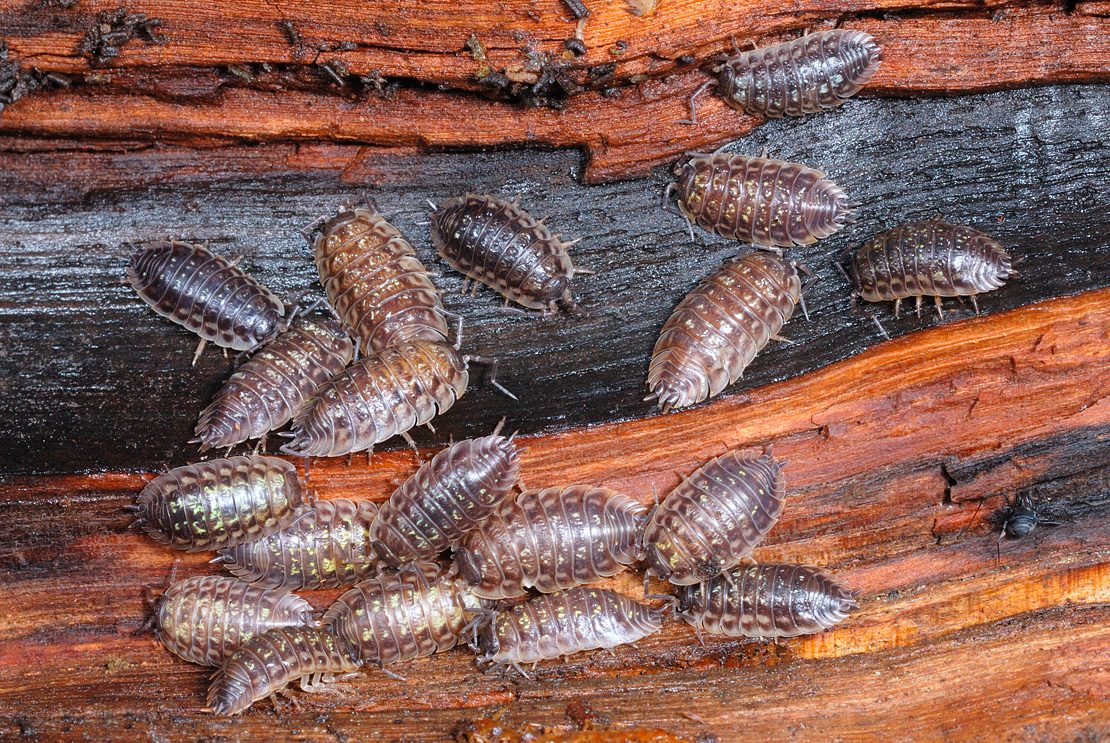Pillbugs
Pillbugs are common inhabitants of landscapes and garden sites around buildings. Among the few crustaceans that have fully adapted to life on land, pillbugs are relatively simple in their construction, but interesting in the way they have adapted to terrestrial life. Occasionally pillbugs become pests around the home.
Identification
The common pillbug, Armadillium vulgare, is a familiar inhabitant of mulched gardens and flower beds. Sometimes called “roly-polies” because of their habit of rolling up into a tight ball when disturbed, pillbugs are small (generally less than 1 cm-long), brownish to grey-black in color, and armored in appearance. The head and abdomen are relatively small, but the thorax is composed of seven overlapping plates. There are seven pairs of legs.
Damage
In most years pillbugs content themselves in feeding harmlessly on decaying vegetable matter in and on the soil. However when abundant–as in years of high rainfall–they can become a significant pest of landscape plants. Most feeding takes place in the evening or at night. Feeding pillbugs readily feed on small garden plants, and new transplants can be eaten to the ground overnight. Some of the plants attacked include hosta, pansies, blue lobelia, cardinal flower, English primrose, Allyssum, Dahlberg daisy, zinnia, verbena, and blackfoot daisy. Garden vegetables are also susceptible, especially strawberries and other plants with fruits that contact the soil. During the day, pillbugs can be found in moist areas under mulch or leaves and vegetable debris of all kinds. Cooler portions of compost piles can also harbor large numbers of pillbugs. Pillbugs often bury themselves several inches beneath the soil surface to avoid hot, dry conditions. Pillbugs are prolific, giving birth to 30-80 young per brood. In Texas pillbugs may produce two to three generations per year. Adult pillbugs are relatively long-lived, with some surviving several years.
Control
The best way to eliminate pillbugs is to destroy their breeding and hiding sites. Eliminate unnecessary piles of leaves, grass clippings and mulch. Flower pots, planters, dog houses, firewood, bricks or other objects that sit directly on the ground should be elevated to allow air-flow and drying underneath. Adjust irrigation systems so that the soil around your home has a chance to dry between irrigations. When abundant, pillbugs can enter homes and become a nuisance. This can be prevented by careful sealing of doors and cracks in foundations. Pillbugs are harmless and can be removed by hand, or by vacuuming. They rarely survive more than one or two days indoors, due to lack of moisture.
